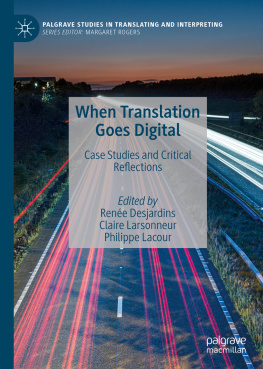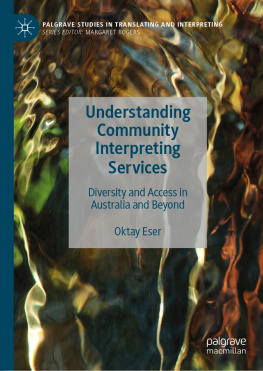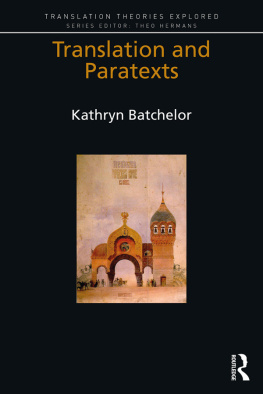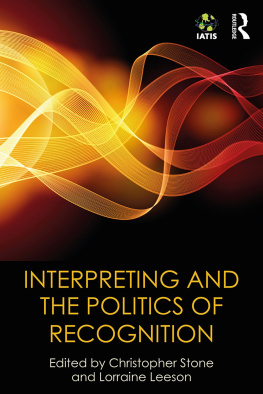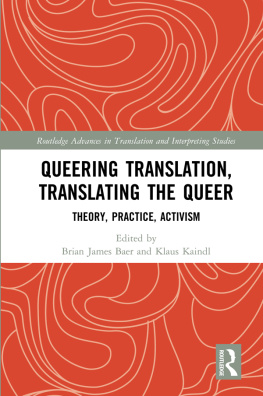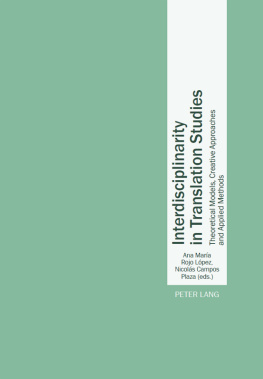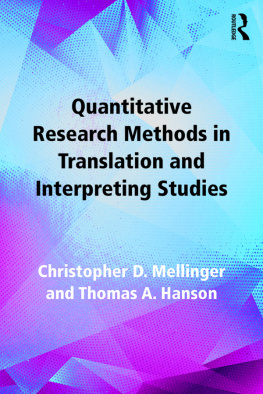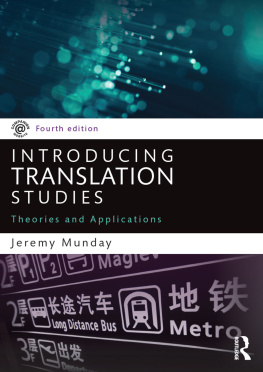Glossary
a shortened form of a term or expression. Interpreters may use abbreviations when taking notes during consecutive interpreting.a set of beliefs or practices that devalue and discriminate against people with physical, intellectual, or psychiatric disabilities; assumes a particular standard body and that disabled people need to be fixed to achieve the standard body.the ability to access the physical and digital worlds irrespective of (dis)abilities and on equal terms with everybody else. As a practice or a discipline, the theoretical and technical efforts conducive to achieving the lowering of barriers to equal access.In voice over, refers to matching the translation with the images what appear on screen to avoid mismatches between what audiences see and what they hear.(neural activation, in artificial neural network):the (positive or negative) numeric value that each neural unit acquires (representing the intensity of excitation) from inputs and from being connected (with varying intensities) with other neural units. This is computed by adding the numeric values coming from other inputs or neural units after being multiplied by a positive or negative number representing the intensity in which those are interconnected, and, finally, by being subjected to a transformational mechanism (a non-linear mathematical function) modifying the results of the previous computations.a theory that focuses on the connections between actors in a network to account for the very essence of a society (rather than social relations between individual humans).interpreting performed on an as-needed basis.according to Vinay and Darbelnet (1958/1995, p. 39) the extreme limit of translation used when the type of situation being referred to by the SL [source language] message is unknown in the TL [target language] culture. In such cases translators have to create a new situation that can be considered as being equivalent
Adaptive machine translation (
adaptive MT, or
adaptive translation)a method of automatic or computer-aided translation in which the translation suggestions are being adapted according to the choices and editions made by the human translator or post-editor.an expression introduced by feminist science philosopher Sandra Harding in the 1980s to explain how often the efforts to change science were not feminist (i.e., understanding inequality and changing its roots) but just a faade in which mentioning a couple of womens names was enough. This was problematic because just adding women to a certain field does not change the field; it most likely just makes those women, if there are few in number, adapt to the space where they are in order to survive in it.material for which there is no source in the text being translated from being included in a translation. A translation strategy identified by Nida (1964).metadata about a word or term entry that are created automatically for basic recognition and classification: usually, at least, unit ID, creation date, and creation user.translating interlingual marketing and advertising materials in a wide range of formats used in marketing and communication campaigns (Valds 2013, p. 303).in humancomputer interaction, the potential for action that objects have in the computer interface. Often used (although not by all) in the sense of perceived affordances, that is, the signifiers pointing at that potential for action. Affordances depend on perception, conventions, (dis)abilities, needs, and other contextual circumstances.the process or result of putting a source text segment and its translation side-by-side in a table or database. This is either performed after a source text is segmented into phrases and then translations are inputted in the target side of the bilingual segment, or, when an unsegmented translation exists for the source text, by identifying the most likely translations for the source phrases. In the latter case, both the source and the target texts are usually segmented at the same time.change in the sounds, categories, word classes, order of elements, clause and sentence structures, and semantics in the translation relative to the source text. A translation strategy identified by Nida (1964, pp. 233238).implications that follow from an utterance alone, without the use of context. For example, coffee would keep me awake analytically implies coffee would prevent me from falling asleep.the ways cultures have defined themselves focusing on the interests of men as a group. This can be seen in the way the standard body is considered as that of a cisgendered male, the way issues related to the public sphere are prioritized over those in the private sphere, and the way culture has excluded the works of women and other identities. Androcentrism is the only reason why we consider that a film, for example, with five male characters addresses all audiences but a film with five women characters is publicized as a womans film.ANNsee Artificial neural network (ANN).a series of methods and definitions of objects and methods that help two computer systems to communicate to each other. By providing an API connection for other products and services, a software product or computer system allows the use of some or all its features by other tools.the branch of translation studies that covers translator training, translation aids (e.g., dictionaries, machine translation programs and translation memories), and translation criticism.a wide-ranging discipline of computer science that tries to mimic some human intelligence processes to solve complex problems and make decisions to help or (in some extreme cases) replace humans in their judgement.
(ANN)a system that loosely resembles the neurons in human brains, with their multiple interconnections and the different ways in which they are activated by means of data or stimuli, representing the way these are more or less meaningfully related to one another.the practice or objective of machine translating source texts without much need of a quality target text so they can be skimmed or their main ideas understood in broad terms.when visual information from an audiovisual production in a verbal narration that is timed to fit between the source text dialogues and designed to interact with the aural sign systems of the source text (Remael 2012, p. 98).an umbrella term for a research field that includes all types of linguistic and semiotic transfer of audiovisual texts (Chaume 2019, p. 311).societal, systemic discrimination or prejudice against individuals who are deaf or hard of hearing.in the creation of computer systems and documentation, the process of adding content (e.g., text, images) by means of specific tools that help with designing and writing. It is often considered one of the main processes in the creation of digital content, alongside code development and graphical design. The latter two create the framework and tools for authoring, but authoring is usually performed by dedicated professionals.a system for measuring quality by means of quantitative indicators that is based on automatic checks, such as comparing the words and word order of a machine-translated text with an actual human translation of the same text.some translators tend not to repeat terms and expressions in their translations even when these occur in the source text.a United Nations Initiative that the institution describes as a visionary agenda for the empowerment of women. It is also one of the reference frameworks to analyse the situation of women around the world and to assess the efforts of States in support of womens empowerment. Adopted by consensus in 1995 following the mobilization of over 40,000 government delegates, experts and civil society representatives at the Fourth World Conference on Women, the Beijing Declaration and Platform of Action embodies the commitment of the international community to achieve gender equality and to provide better opportunities for women and girls. The platform of action responds to the collective effort of women and girls around the globe who have fought to achieve gender equality and womens rights and acts as a continuum of the international communitys commitment to address civil, political, social, economic and cultural inequalities. It remains relevant today, affirming that womens rights are human rights and that equality between women and men benefits everyone.a structured document containing the source and target segments, as well as format and other information to help process a translation in a computer-assisted technology tool, including auxiliary processes such as target document export, translation memory updating, and so on.a pair of texts, one of which is the translation of the other. Bitexts usually include segmented and aligned bilingual sentences.Described by Vinay and Darbelnet (1958/1995, p. 31) as the simplest of all translation methods, borrowing is the use in a translation of a term from the language of the source text, often done, they say (1958/1995, p. 32), for stylistic effect.described by Vinay and Darbelnet (1958/1995, p. 32) as a special kind of borrowing whereby a language borrows an expression form of another, but then translates literally each of its elements. For example, the Greek term tele (far) combines with the Latin term visio (sight) to form the English term television, which is calqued into the Danish fjernsyn and the German Fernsehen, both of which mean something like distant sight.accumulated labor, whether in its materialized or embodied form.audiovisual modes that insert text in the audiovisual text on screen or stage, such as subtitling.a study of just one particular instance of the feature that one aims to study.the way characters are digitally stored forming a recognizable system. Characters and properties of languages are stored in a series of bits (ones and zeroes) or bytes (series of 8 bits), which represent numbers (codepoints), as established in character sets. Character sets are tables or characters for specific languages or character encodings, in which each character is represented by a number or codepoint.expectations of the target audience as how a characters voice should sound like.a French term that refers to a whispered simultaneous interpretation to an individual or a small group of people.term used in Western societies to refer to individuals whose bodies conform to the societal gender expectations for a particular gender. For example, if a person is born with a vagina and feels that they are a woman, they are cisgender because they fit societal expectations of the type of body a woman is supposed to have. Individuals who are born with bodies that do not fit societal gender expectations (e.g., a man who is born with a vagina) are referred to in Western societies as trans people.the production of subtitles or dubbed versions working directly with online server applications rather than with software downloaded in a personal computer(s) (Daz-Cintas 2014).approaches that focus on the mental processes involved in translation, often drawing on cognitive grammar which, as Langacker (2006, p. 540) puts it, regards language as an integral facet of cognition, and grammar as inherently meaningful. Gutts relevance theoretic approach also fall within this class of approaches.engaged proportion of limited-capacity central processing.mental activities involved in activities such as thinking, estimating, calculating, solving problems, and translating.state of mind.refers to when a source text and its translation convey the same message.the type of interaction that takes place between various parties.an alteration in the state of mind of the receiver of the text that derives from their receiving the text together with their overall mental state.a discipline concerned with analyzing, processing, and producing natural language using computational means. It is often used interchangeably with


